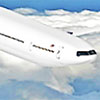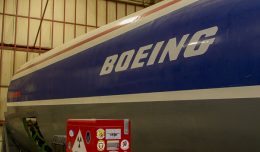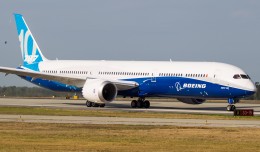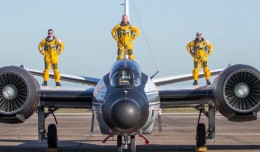
MIT D-Series aircraft design.
A team of MIT researchers has unveiled their aircraft designs for NASA’s N+3 initiative, an engineering study intended to help define the next three generations of commercial aviation while reducing fuel usage by 70% and NOx emissions by 75%.
MIT’s D-series, which would seat 180 passengers and replace a Boeing 737-size aircraft, uses a dual-fuselage design and was nicknamed the “double bubble.”

The H-series uses a “hybrid wing body” to carry up to 350 passengers, meant to replace a 777-size aircraft.
Boeing, GE Aviation and Northrop Grumman are also designing aircraft for N+3. NASA expects these planes to take off by 2035.
via Inhabitat







